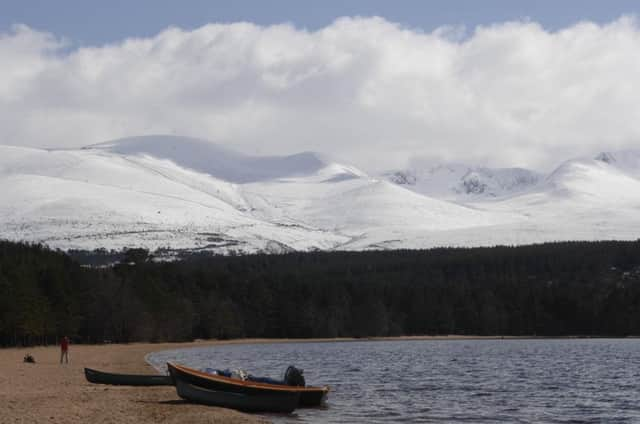A fitting year to add to Scotland’s national parks


Scotland’s landscapes rank amongst the best in the world in their richness, quality and diversity. We have wild mountains, pristine rivers and lochs, ancient forests and stunning coastline and islands – all rich in wildlife and history.
Our landscapes enhance our quality of life and our well-being. They give us inspiration and enjoyment. They provide great opportunities for outdoor recreation, including walking, cycling, canoeing and mountaineering. They are one of the main reasons why people visit Scotland, and they provide important economic benefits through tourism, our largest industry.
Advertisement
Hide AdAdvertisement
Hide AdSo, with landscapes of such quality you might expect Scotland to have several national parks – the principal tool used across the world to safeguard and manage fine landscapes. Although there are more than 3,500 national parks across the world (including 60 in Canada, 29 in Norway and 14 in New Zealand) Scotland has only two. Both parks are quite recently set up, despite the Scottish Campaign for National Parks (SCNP) and the Association for the Protection of Rural Scotland (APRS) campaigning for them for more than 60 years. These organisations feel that more of Scotland’s landscapes deserve national park status, and argue that the Scottish Government should do more to implement its 2011 Manifesto commitment to “work with communities to explore the creation of new National Parks”.
A recent report by SCNP and APRS, Unfinished Business, summarises the benefits which national park status brings, and recommends improvements to the operation of our current and future national parks. It sets out criteria against which any future park should be assessed, and proposes seven further areas which are considered to meet these criteria – including at least one coastal and marine national parks. Unfinished Business can be found on the APRS or SCNP websites – and the campaign for Scottish Government action keeps going.
Support for the proposals in the report have been formally backed by many of Scotland’s leading environmental membership charities – including the National Trust for Scotland, RSPB Scotland, Ramblers Scotland, the Scottish Wild Land Group and Woodland Trust Scotland. SCNP and APRS work in partnership on the issue with all of these bodies through Scottish Environment LINK’s National Parks Task Force. And, crucially, local people from several of the proposed national park areas – including from the Cheviots, Galloway and Mull – have contacted us to support the campaign.
“National Park” is the leading internationally recognised designation for places of the highest national importance for our natural heritage, including landscape, wildlife and recreation. It is the highest accolade which can be given to an area within its national context.
Many national parks are truly wild. Others, as in Scotland, are wholly or partly inhabited, working areas. They stand, proudly, alongside world-renowned places including Jotunheimen in Norway, Mount Kilimanjaro in Tanzania, the Galapagos Islands in Ecuador, Cradle Mountain in Tasmania, the Karakoram in Pakistan and Yosemite in the US.
Scotland’s national parks bring environmental, social and economic benefits to locals, visitors and to Scotland as a whole. They provide a focus on a particular place, mechanisms to stimulate conservation management, and additional resources to reflect their importance to the nation. Within their statutory framework, they benefit from an agreed plan designed to safeguard their special qualities for future generations whilst managing competing pressures such as tourism, transport, energy, agriculture, forestry and fishing in integrated and positive ways. They inspire pride and passion amongst local people and visitors.
The Scottish Government provides funding to sustain the communities in and around national parks, encouraging jobs which support and look after these special places. The parks bring visitors to remote areas, benefit tourism, farming and fishing, and generate new commercial and marketing opportunities. National parks supplement and add value to existing designations rather than duplicate or replace them. The designation is fixed, so, while other arrangements may come and go, national parks are rarely abolished.
Given this range of benefits, the two existing national parks represent remarkable value for money at a combined cost of about £14 million per annum. Several of the proposed national parks would cost less than this, as they would cover smaller areas and require less complex management structures and fewer staff.
Advertisement
Hide AdAdvertisement
Hide AdNext month marks 100 years since the death of John Muir, the Scottish naturalist, explorer and writer who inspired the creation of the world’s first national parks in 19th-century US. He is known as the “Father of National Parks”.
It would be a particularly fitting tribute to John Muir if the Scottish Government were to announce the start of the process to create Scotland’s next national park.
• John Mayhew represents Scottish Environment LINK National Parks Task Force